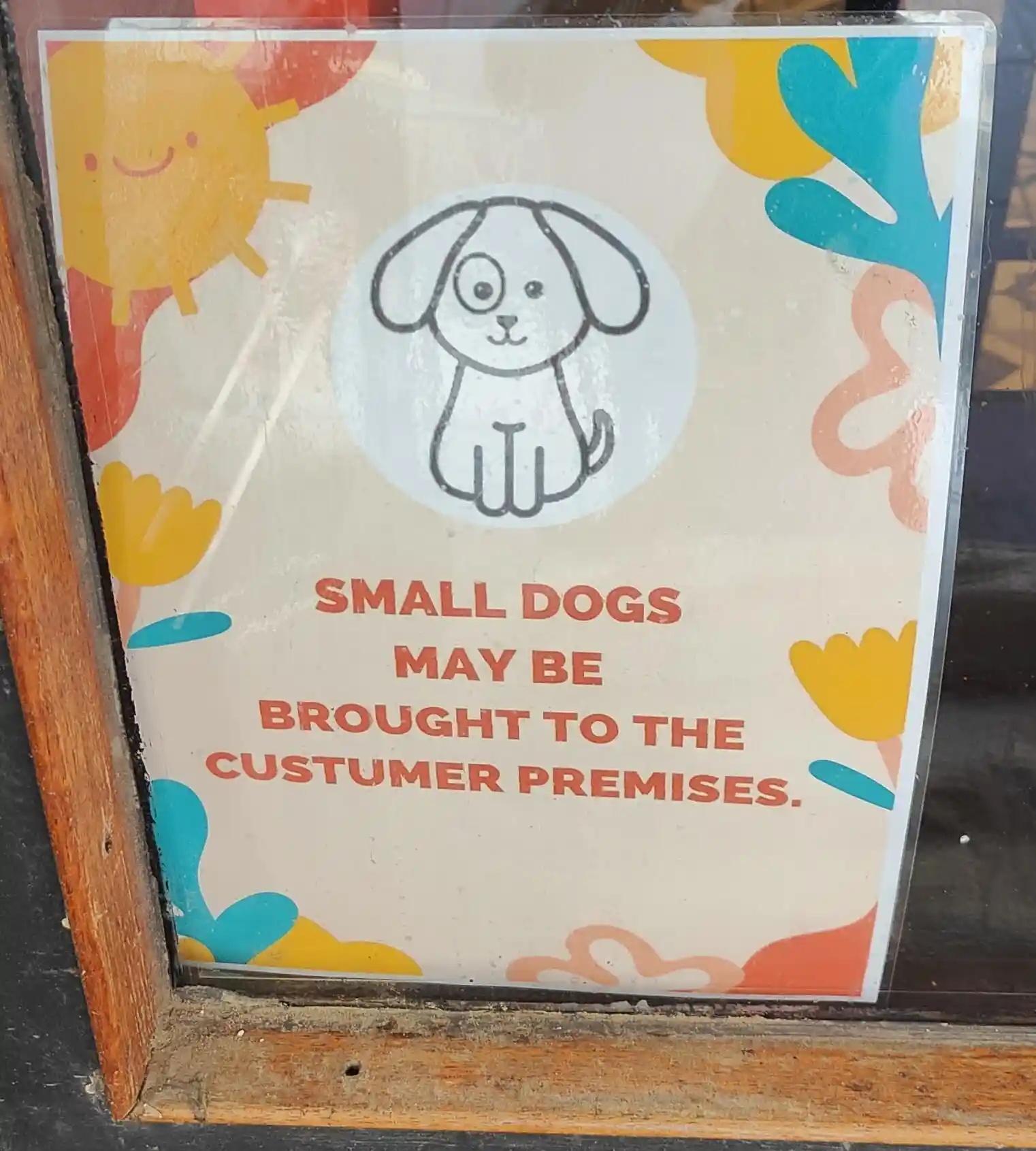
Now this one was simply cute. Spotted in the door of a asian restaurant in downtown Helsinki, we see a happy colorful sigh with flowers, a smiling sun and a very cute cartoony dog looking straight at the viewer. The textual component states, with a somewhat adorable typo, that
SMALL DOGS MAY BE BROUGHT TO THE CUSTUMER PREMISES.1
The first thing I paid attention, after smiling at the cuteness, is how (again) context plays a crucial role in (dog) signs. The dog is staring directly at the viewer, but this is not a sign of threat or alertness like would be the case in some other context. Instead, the dog seems to be inviting the viewer to engage with the cuteness. This might be a theme with signs related to adorable dogs.
Borrowing some terminology from Kreuss & van Leeuwen, the sign is not an offer image that is simply offering something for the viewer to look at, but a demand image with the dog (and the sun in the corner) acknowledging the viewer and actively creating an interaction of sorts.2 But the context here makes not a demand related to rules or caution, but to partake in the spirit of cuteness and adorability of the scene.
In stating that small dogs are allowed, the sign then naturally implies through omission that big dogs are not allowed. But there is an implicit explanation softening such forbidding, especially in the context of a restaurant: small dogs are welcome as they do not cause logistical or spatial issues, while large dogs could cause problems. All in all, this is one of the kindest approaches to limiting dogs in a specific area.
-
You rarely see punctuation in one sentence signs WRITTEN IN ALL CAPS. It would be interesting to look at various cases to see if there are particular situation where people tend to use them. ↩
-
I wonder if the sign maker here is (unconsciously) projecting things from children's shows? Reading one popular audience book by Pinker doesn't exactly make me an expert in child development, but now that I think of it, the shows for very small kids do tend to make contact for the viewer. Perhaps very small children could not appreciate the more abstract enjoyment of more "offer" style shows? ↩